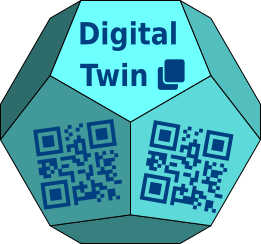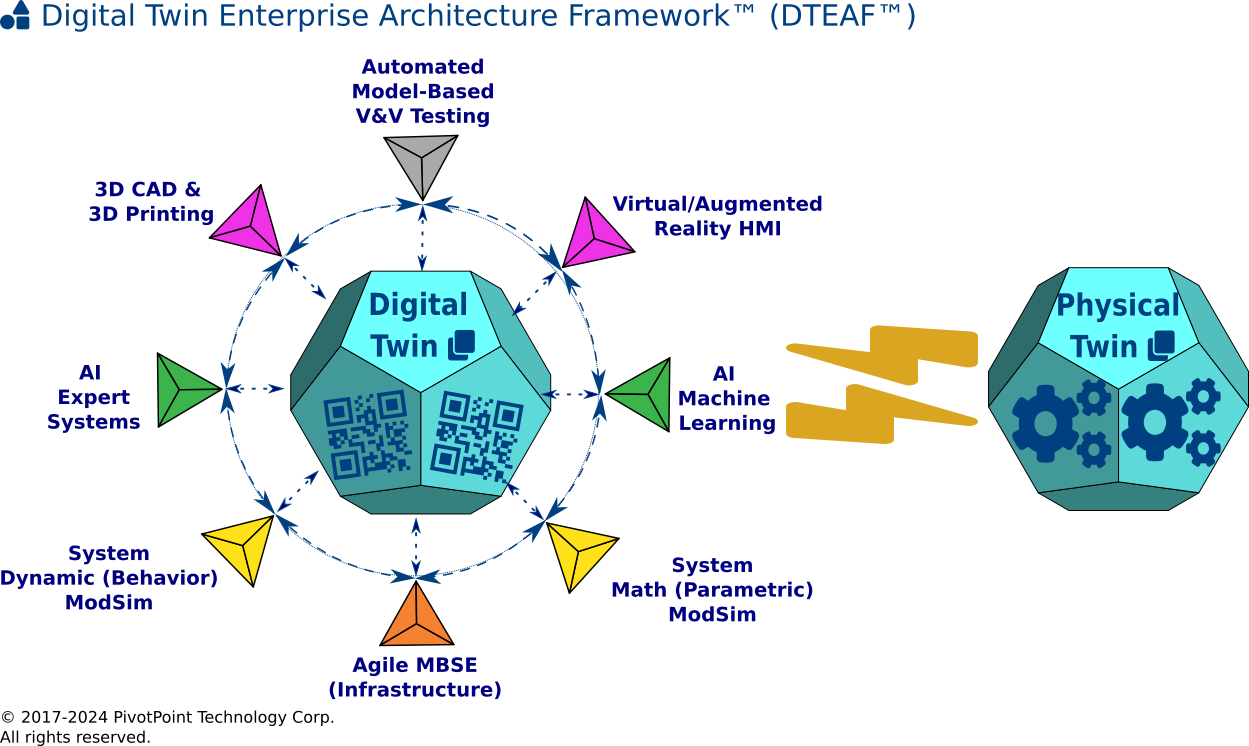DT FAQ: What is Digital Physics? How does it relate to DE?
What is Digital Physics? How does Digital Physics relate to Digital Engineering?
FAQ Variant(s): What is Digital Ontology?
In the context of physics, cosmology, and Digital Engineering, Digital Physics is a kind of digital ontology in which the physical universe is described by information. The first cogent expression of this "it from bit" idea may be attributed to the distinguished physicist John Archibald Wheeler in his seminal paper Information, Physics, Quantum: The Search for Links [Wheeler 1989], the Abstract of which is reproduced below:
This report reviews what quantum physics and information theory have to tell us about the age-old question, How come existence? No escape is evident from four conclusions: (1) The world cannot be a giant machine, ruled by any preestablished continuum physical law. (2) There is no such thing at the microscopic level as space or time or spacetime continuum. (3) The familiar probability function or functional, and wave equation or functional wave equation, of standard quantum theory provide mere continuum idealizations and by reason of this circumstance conceal the information-theoretic source from which they derive. (4) No element in the description of physics shows itself as closer to primordial than the elementary quantum phenomenon, that is, the elementary device-intermediated act of posing a yes-no physical question and eliciting an answer or, in brief, the elementary act of observer-participancy. Otherwise stated, every physical quantity, every it, derives its ultimate significance from bits, binary yes-or-no indications, a conclusion which we epitomize in the phrase, it from bit [italics added for emphasis].
— Information, Physics, Quantum: The Search for Links [Wheeler 1989]:
According to the Digital Physics theoretical approach, the physical universe can be considered to be the output of a deterministic or probabilistic computational device. Although many notable physicists and philosophers have contributed to the evolution of the Digital Physics concept, the most popular comprehensive expression of this approach to date is Stephen Wolfram's self-published and self-aggrandizing treatise: A New Kind of Science [Wolfram 2002].
It is important to note that Digital Physics is not restricted to deterministic mathematics; it can also be used to apply probabilistic (statistical), stochastic, and other non-determistic mathematics to physical models of Systems-of-Systems. Consequently, Digital Physics can use deterministic mathematics to specify classic Newtonian Mechanics and its General Relativity (spacetime) extensions; it can also use probabilistic and other non-determistic mathematics to specify Quantum Mechanics and Chaos Theory phenomena.
So how does Digital Physics relate to architecting and designing Digital Twins?
The vigorous usage of Digital Physics math libraries for Mathematical (Parametric) ModSim greatly increases the rigor and efficacy of Digital Engineering's massive ModSim approach for architecting and designing Digital Twins. Applying mathematical analysis techniques early and throughout the Digital Engineering System Development Life Cycle (SDLC) forces errors early in the SDLC, when they are exponentially more cost-effective to fix. For example, the International Space Station (ISS) could apply Digital Physics to Model & Simulate the 4D (spacetime) complexity of a space rendezvous mission. As a more ambitious example, the Space Force could apply Digital Physics to Model & Simulate the combinatorial explosion of hypothetical 4D space warfare scenarios.
DIGITAL TWIN WORKS, DIGITAL TWIN ENTERPRISE ARCHITECTURE FRAMEWORK, DTEAF, AGILE MODEL-BASED SYSTEMS ENGINEERING, AGILE MBSE, and AGILE MBSE 6D EAF are trademarks of PivotPoint Technology Corporation. All other product and service names mentioned are the trademarks of their respective companies.



